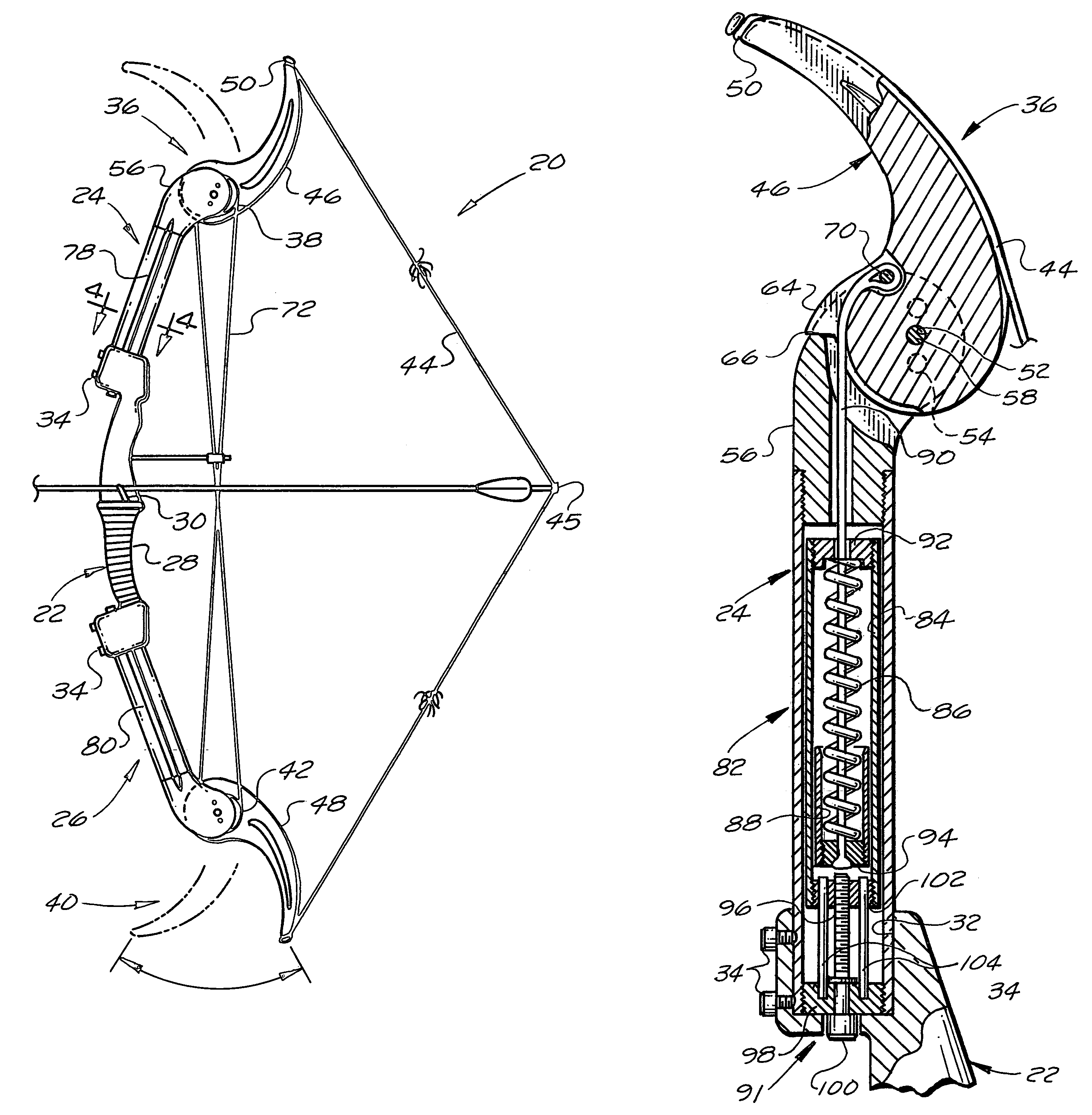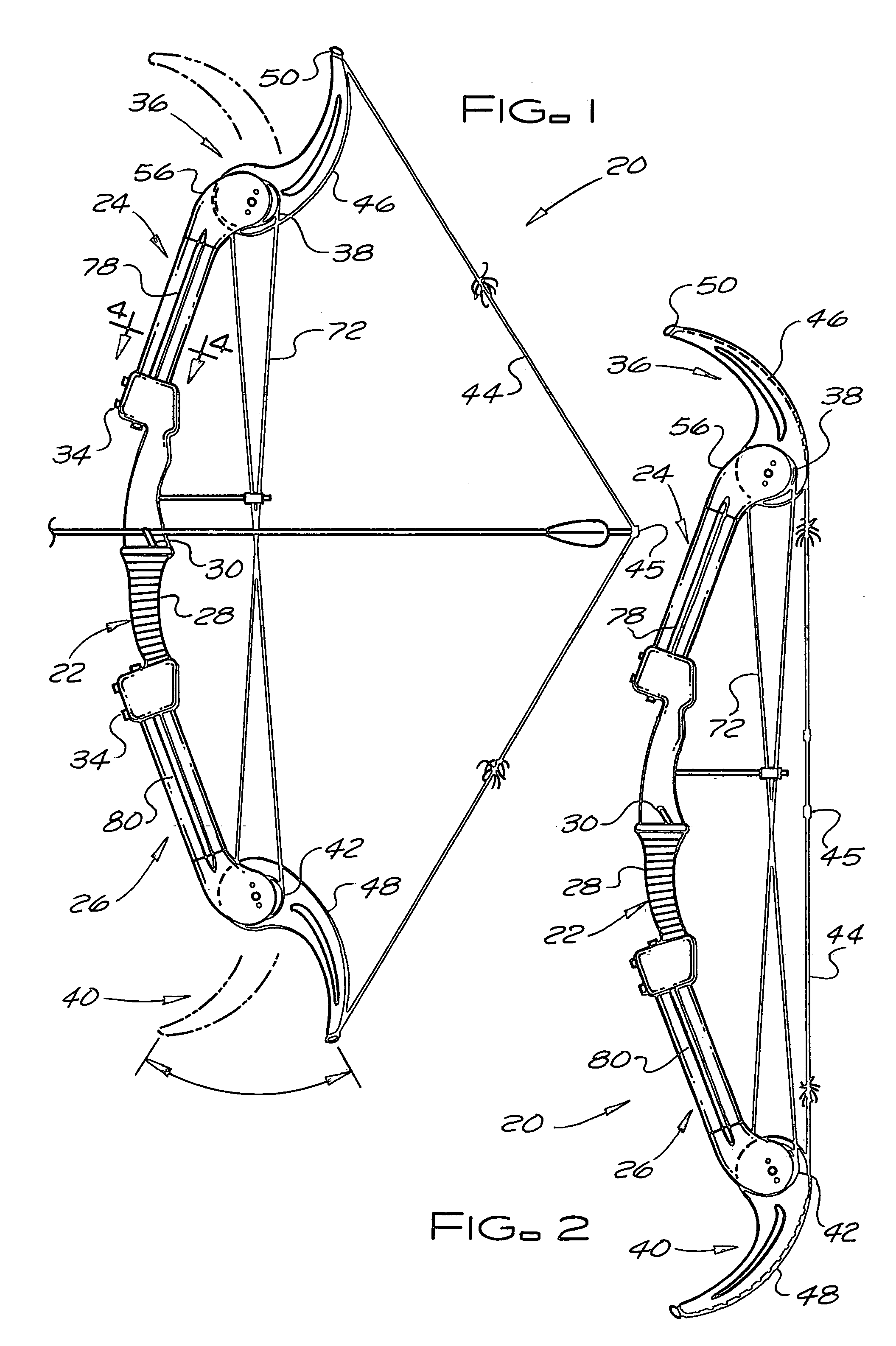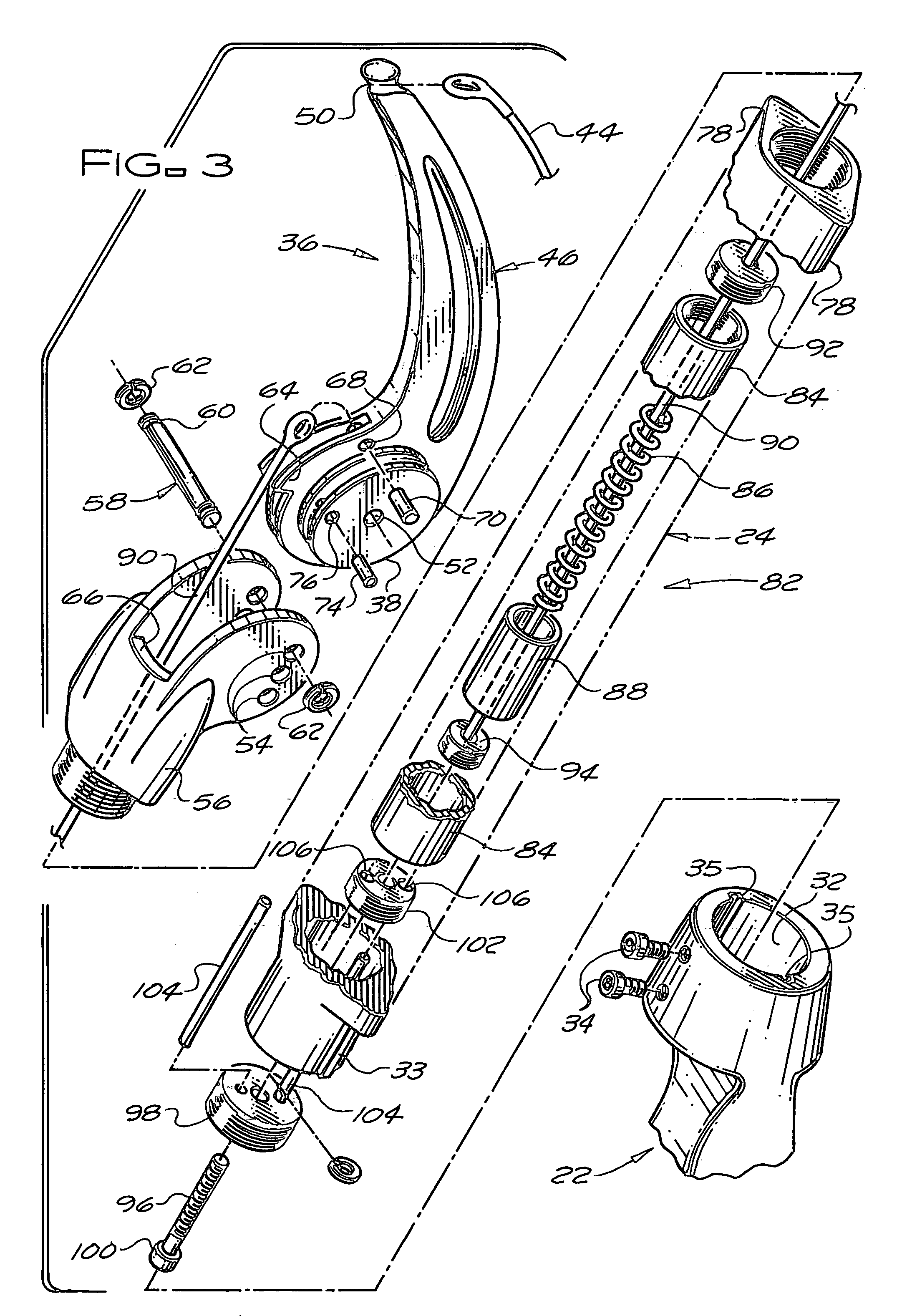Compound spring-loaded archery bow
a spring-loaded, compound technology, applied in the direction of spring guns, white arms/cold weapons, weapons, etc., can solve the problems of bows that cannot be disassembled for compact storage, handling, transportation, etc., and achieve the effect of optimum performance, easy adjustment, and easy and accurate tuning of performance characteristics of bows
- Summary
- Abstract
- Description
- Claims
- Application Information
AI Technical Summary
Benefits of technology
Problems solved by technology
Method used
Image
Examples
Embodiment Construction
[0018]As shown in FIGS. 1 and 2, the compound spring-loaded archery bow 20 of the subject invention has a rigid bow frame that includes a rigid central riser 22, a rigid upper limb 24, and a rigid lower limb 26. The rigid central riser 22 had a handgrip 28 and an arrow rest 30. The rigid upper limb 24 extends upward from an upper end portion of the central riser 22, the rigid lower limb 26 extends downward from a lower end portion of the central riser 22, and the compound spring-loaded archery bow 20 has the appearance of a traditional archery bow.
[0019]Preferably, the rigid upper limb 24 and the rigid lower limb 26 are detachably secured to the central riser 22 so that the compound spring-loaded archery bow 20 can be easily disassembled for compact storage, handling, and transport. In a preferred embodiment of the subject invention the upper end portion and the lower end portion of the rigid central riser 22 have sockets 32 for receiving the lower end portion of the rigid upper lim...
PUM
 Login to View More
Login to View More Abstract
Description
Claims
Application Information
 Login to View More
Login to View More - R&D
- Intellectual Property
- Life Sciences
- Materials
- Tech Scout
- Unparalleled Data Quality
- Higher Quality Content
- 60% Fewer Hallucinations
Browse by: Latest US Patents, China's latest patents, Technical Efficacy Thesaurus, Application Domain, Technology Topic, Popular Technical Reports.
© 2025 PatSnap. All rights reserved.Legal|Privacy policy|Modern Slavery Act Transparency Statement|Sitemap|About US| Contact US: help@patsnap.com



